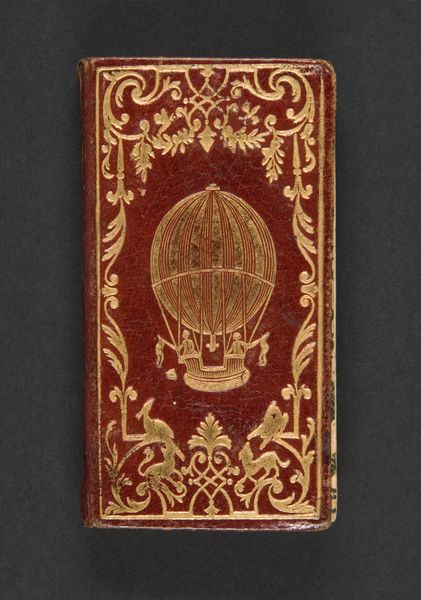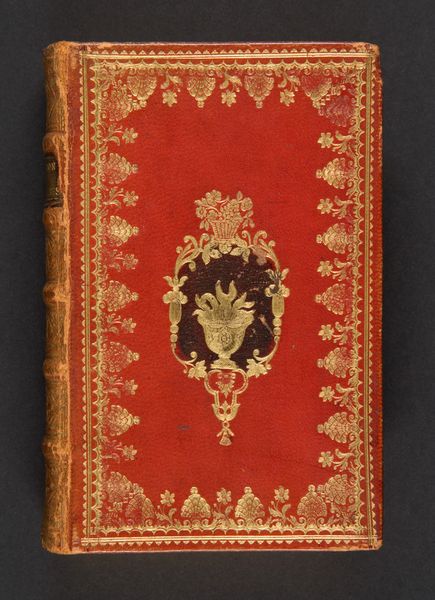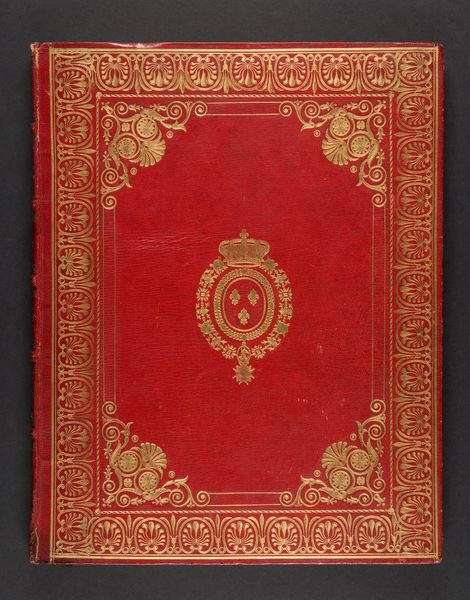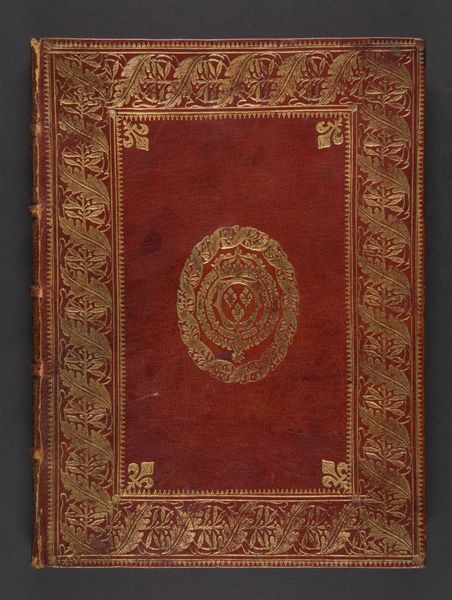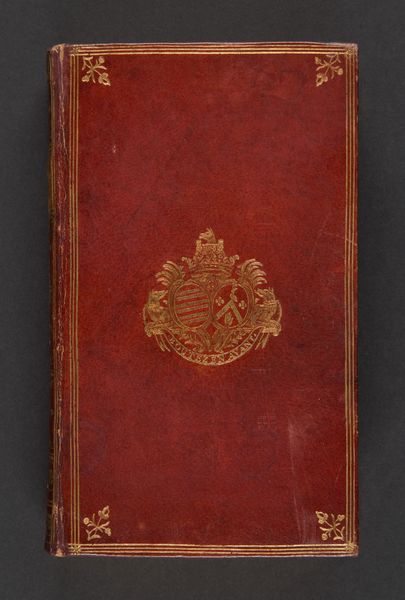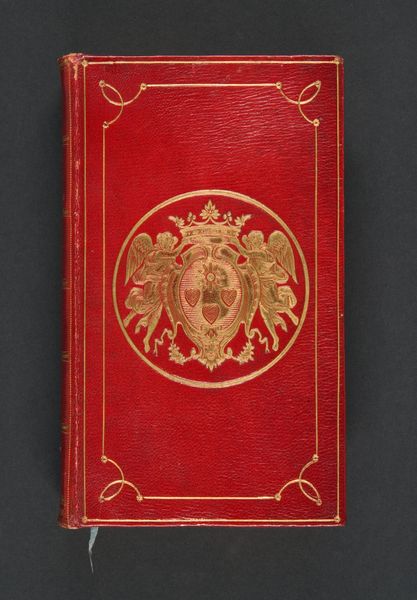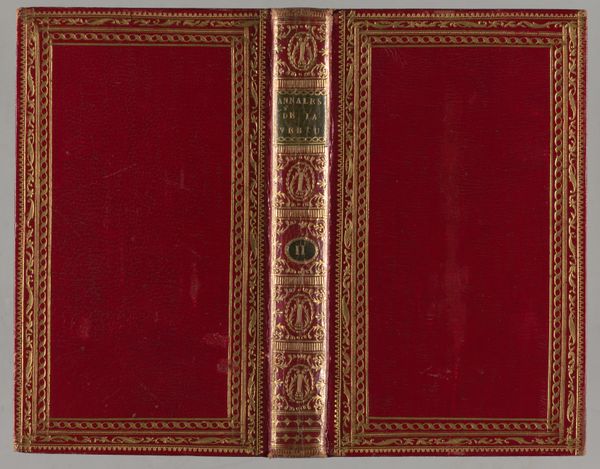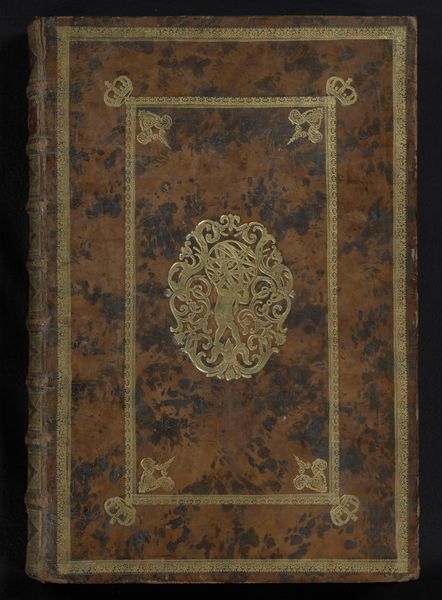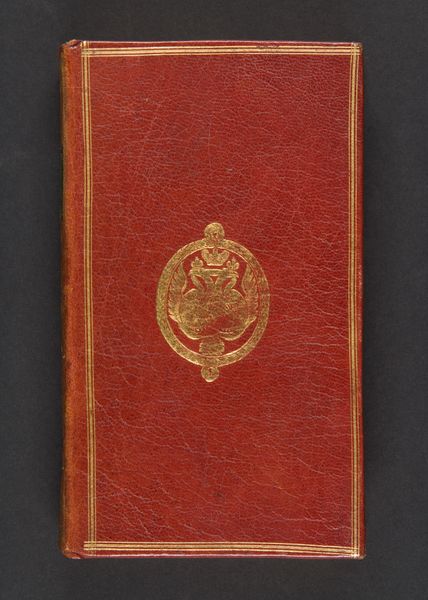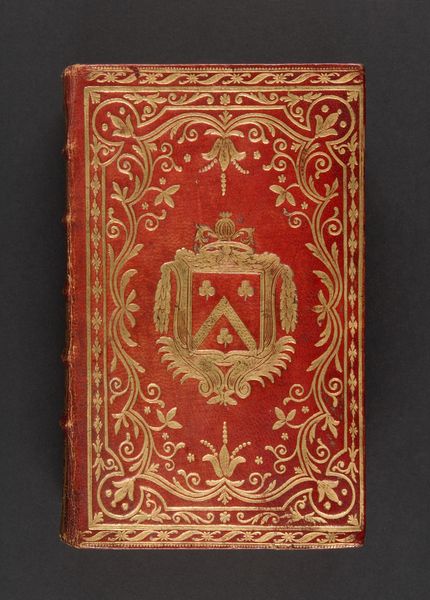
Almanach royal : année bissextile M.DCC.LXXXIV. présenté a Sa Majesté pour la premiere fois en 1699 par Laurent d'Houry ... 1783
0:00
0:00
#
natural stone pattern
#
naturalistic pattern
#
man-made pattern
#
detailed texture
#
geometric pattern
#
abstract pattern
#
organic pattern
#
intricate pattern
#
pattern repetition
#
layered pattern
Dimensions: 683 pages
Copyright: Public Domain
Curator: Here we have the “Almanach royal: année bissextile M.DCC.LXXXIV…", published in 1783. The creator is Laurent Charles d'Houry. Editor: The gold detailing against that dark reddish brown… it's sumptuous! Reminds me immediately of courtly rituals, labor, and status display all at once. It's a really beautiful object, meant to be handled, possessed. Curator: Absolutely. And given it's an almanac presented to the French monarchy, it's no surprise it reads opulence and authority. Think about the intersection of power, knowledge, and this book as a status symbol—a signifier within a deeply stratified society. Editor: Precisely! And the making of it! Consider the materials: The gilded, tooled leather involves highly skilled artisans, a whole system of labor and materials carefully put into service here. We should look at how this craftsmanship interacts with those structures of power. Curator: That is an important observation. There is that interplay between manual work and the circulation of these ideas and dates contained within this small, beautiful package. There is this strange friction here between high society and the makers of their tools and totems. How would you say that impacts how we consider works like this, and their value in institutions like this one today? Editor: By revealing those hidden production lines. We foreground the object’s inherent status but at the same time we want to expose the relations that brought into being such a treasure. Only then can it be a genuinely precious relic in an evolving world. It helps us ground it within our global realities. Curator: I like that, focusing on material context can transform how we connect historical objects to contemporary ideas about gender, race, and labor equity. It’s not enough to see this only as a sign of power; it’s also a record of production, and we can explore these ideas simultaneously. Editor: Well said. A humble little book indeed that has quite a lot to teach. I think the audience now should find it, maybe experience its influence in a new and unexpected way.
Comments
No comments
Be the first to comment and join the conversation on the ultimate creative platform.

